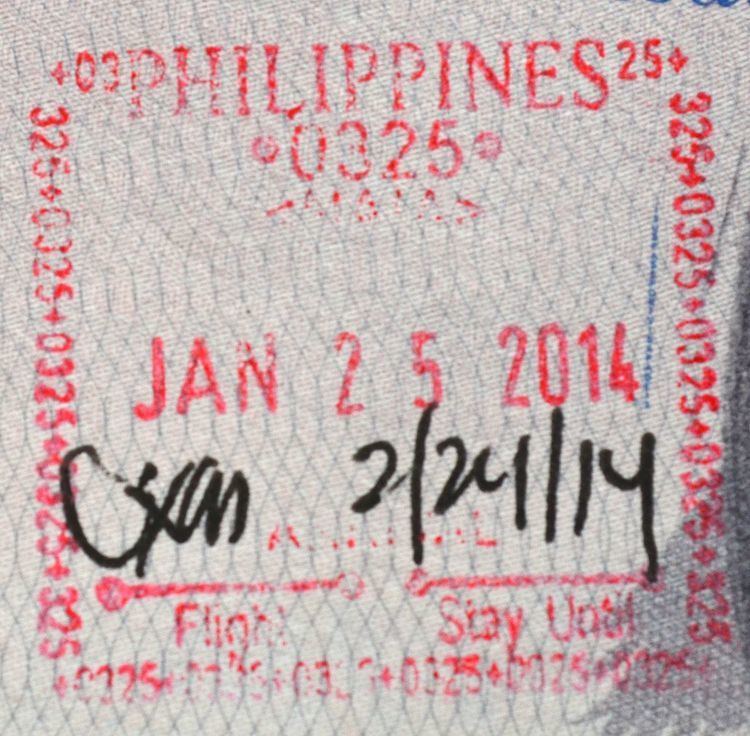 | ||
The visa policy of the Philippines is governed by Commonwealth Act No. 613, also known as the Philippine Immigration Act, and by subsequent legislation amending it. The Act is jointly enforced by the Department of Foreign Affairs (DFA) and the Bureau of Immigration (BI).
Contents
- Visa waiver program
- Replacement visas
- Visa on arrival
- Electronic Travel Authorization
- Non ordinary passports
- APEC Business Travel Card
- Types of visas
- Visitor statistics
- References
Generally, foreign nationals who wish to enter the Philippines require a visa unless:
Visa waiver program
The Philippine visa waiver program is governed by Executive Order No. 408, signed on November 9, 1960 by President Carlos P. Garcia, and by subsequent executive issuances amending it. While visas are issued by the BI, the program itself is administered by the Department of Foreign Affairs, which maintains a list of countries eligible to participate in the program. In principle, nationals of countries which maintain diplomatic relations with the Philippines and whose nationals are not classified as restricted nationals by the DFA are allowed to enter the Philippines without a visa. Eligible nationals availing of visa-free entry must possess passports valid for at least six months beyond their contemplated period of stay.
On July 1, 2013, the Bureau of Immigration began implementing an extended visa waiver for covered nationals from 21 to 30 days, which the Philippine government hopes will boost tourism
Visa exempt foreign nationals may extend their stay two months per extension but not exceeding the maximum period of two years. Foreign nationals who require a visa may extend their stay one month per extension but not exceeding the maximum period of six months and must have a ticket valid for onward travel.
In March 2015 it was proposed to extend the visa exemption to citizens of China and India.
Holders of passports of the following 157 jurisdictions do not require a visa for Philippines:
Replacement visas
Nationals of China traveling as tourists and holding a valid visa issued by Australia, Canada, Japan, United States or a Schengen Area state may enter and stay without a visa for up to 7 days.
Nationals of India holding a valid tourist, business or resident visa issued by Australia, Canada, Japan, Singapore, United Kingdom, United States or a Schengen Area state may enter and stay without a visa for up to 14 days. They may enter from any port of entry.
Visa on arrival
Holders of passports issued by any country except the following may obtain a visa (for a fee) valid for 59 days on arrival:
Electronic Travel Authorization
Citizens of Republic of China may apply for an entry permit through the Electronic Travel Authorization system on the website of the Manila Economic and Cultural Office.
Non-ordinary passports
Holders of diplomatic, official or service passports of the following countries enjoy an extended length of stay when compared to ordinary passports:
Holders of diplomatic, official or service passports of the following countries may enter without a visa while ordinary passport holders require one:
D — diplomatic passports
O — official passports
S — service passports
APEC Business Travel Card
Holders of passports issued by the following countries who possess an APEC Business Travel Card (ABTC) containing the "PHL" code on the reverse that it is valid for travel to Philippines can enter visa-free for business trips for up to 59 days.
ABTCs are issued to nationals of:
Types of visas
The Philippine Immigration Act prescribes fourteen different visas grouped into two broad categories
Some visas have been introduced by subsequent legislation or proclamation of the President which are not classified by the Philippine Immigration Act as either being a Section 9 or Section 13 visa. These visas are called special visas and are issued to groups such as retirees, investors and entrepreneurs.
Visitor statistics
Most visitors arriving to Philippines were from the following countries of nationality:
